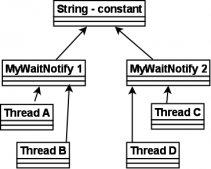前言
本文主要给大家介绍了关于Spring中@Scheduled和HttpClient的坑,分享出来供大家参考学习,下面话不多说了,来一起看看详细的介绍吧。
曾经踩过一个大坑:
由于业务特殊性,会定时跑很多定时任务,对业务数据进行补偿操作等。
在Spring使用过程中,我们可以使用@Scheduled注解可以方便的实现定时任务。
有一天早上突然发现,从前一天晚上某一时刻开始,所有的定时任务全部都卡死不再运行了。
@Scheduled默认单线程
经排查后发现,我们使用@Scheduled注解默认的配置的话,所有的任务都是单线程去跑的。写了一个测试的task让它sleep住,就很容易发现,其他所有的task在时间到的时候都没有触发。
如果需要开启多线程处理,则需要进行如下的配置,设置一下线程数:
|
1
2
3
4
5
6
7
|
@Configurationpublic class ScheduleConfig implements SchedulingConfigurer { @Override public void configureTasks(ScheduledTaskRegistrar taskRegistrar) { taskRegistrar.setScheduler(Executors.newScheduledThreadPool(5)); }} |
这样就解决了如果一个task卡住,会引起所有task全部卡住的问题。
但是为什么会有task卡住呢?
HttpClient默认参数配置
原来,有些task会定时请求外部服务的restful接口,而HttpClient的配置如下:
|
1
2
3
4
5
|
PoolingHttpClientConnectionManager connManager = new PoolingHttpClientConnectionManager(); connManager.setMaxTotal(maxConnection); httpClient = HttpClients.custom() .setConnectionManager(connManager) .build(); |
在最开始使用HttpClient的时候,根本没有想这么多,基本也都是用用默认配置。
追踪源码可以发现,在使用上述方式进行配置的时候,HttpClient的timeout时间竟然全部都是-1,也就是说如果对方服务有问题,HttpClient的请求会永不超时,一直等待。源码如下:
|
1
2
3
4
5
6
7
8
9
10
11
12
|
Builder() { super(); this.staleConnectionCheckEnabled = false; this.redirectsEnabled = true; this.maxRedirects = 50; this.relativeRedirectsAllowed = true; this.authenticationEnabled = true; this.connectionRequestTimeout = -1; this.connectTimeout = -1; this.socketTimeout = -1; this.contentCompressionEnabled = true;} |
所以我们这时候必须手动指定timeout时间,问题就解决了。例如:
|
1
2
3
4
5
6
7
8
9
10
11
|
PoolingHttpClientConnectionManager connManager = new PoolingHttpClientConnectionManager(); connManager.setMaxTotal(maxConnection); RequestConfig defaultRequestConfig = RequestConfig.custom() .setSocketTimeout(3000) .setConnectTimeout(3000) .setConnectionRequestTimeout(3000) .build(); httpClient = HttpClients.custom() .setDefaultRequestConfig(defaultRequestConfig) .setConnectionManager(connManager) .build(); |
联想到另一个问题
其实HttpClient的使用过程中也遇到过另外一个配置的问题,就是defaultMaxPerRoute这个参数。
最开始使用的时候也没有注意过这个参数,只是设置过连接池的最大连接数maxTotal。
defaultMaxPerRoute参数其实代表了每个路由的最大连接数。比如你的系统需要访问另外两个服务:google.com 和 bing.com。如果你的maxTotal设置了100,而defaultMaxPerRoute设置了50,那么你的每一个服务的最大请求数最大只能是50。
那么如果defaultMaxPerRoute没有设置呢,追踪源码:
|
1
2
3
4
5
6
7
8
9
10
11
12
13
|
public PoolingHttpClientConnectionManager( final HttpClientConnectionOperator httpClientConnectionOperator, final HttpConnectionFactory<HttpRoute, ManagedHttpClientConnection> connFactory, final long timeToLive, final TimeUnit tunit) { super(); this.configData = new ConfigData(); //这里使用的CPool构造方法,第二个参数即为defaultMaxPerRoute,也就是默认为2。 this.pool = new CPool(new InternalConnectionFactory( this.configData, connFactory), 2, 20, timeToLive, tunit); this.pool.setValidateAfterInactivity(2000); this.connectionOperator = Args.notNull(httpClientConnectionOperator, "HttpClientConnectionOperator"); this.isShutDown = new AtomicBoolean(false);} |
这里发现,原来默认值竟然只有2。怪不得当时在高并发情况下总会出现超时,明明maxTotal已经设的很高。
所以如果你的服务访问很多不同的外部服务,并且并发量比较大,一定要好好配置maxTotal和defaultMaxPerRoute两个参数。
所以后来再使用任何新的东西,都有好好看下都什么配置,有疑问的一定要先查一下,不要网上copy一段代码直接就用。当时可能没问题,但是以后没准就被坑了。
总结
以上就是这篇文章的全部内容了,希望本文的内容对大家的学习或者工作具有一定的参考学习价值,如果有疑问大家可以留言交流,谢谢大家对服务器之家的支持。
原文链接:https://segmentfault.com/a/1190000013914327

















